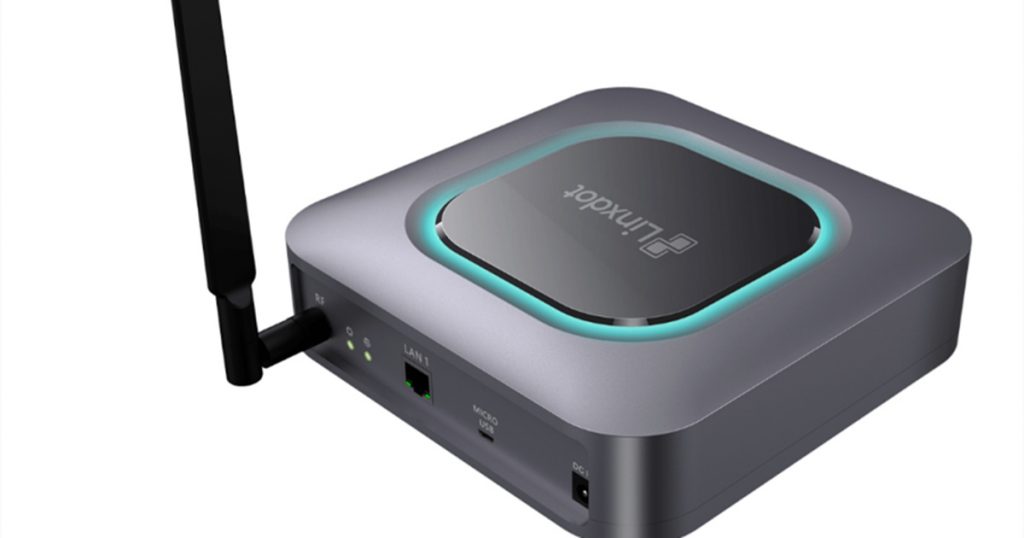The best part about Helium Mining is its set-and-forget modus operandi. Besides, it powers a world-class decentralized wireless network.
Crypto Mining is supposed to be complicated and costly.
High-performing GPUs or the ASIC miners humming the life out of the nearby living with constant, unbearable heat is how you should picture conventional mining setups.
And don’t even let me start on mining investments.
Enter Helium blockchain–an open-source, distributed wireless network powering billions of IoT devices with low-cost internet. But there is a lot in the works, like a Helium 5G network in which you pay based on the data you actually consume and not some fixed monthly subscription.
It’ll be a lot economical, and the long-term plan is to kick the conventional internet service providers out of business.
However, we’re here primarily here for Helium mining which is about…
In a nutshell, you purchase and install a wireless device at your premises to earn mining rewards. In contrast to power-hungry traditional miners, these little WiFi devices consume only 5W.
But they give a hard time to the ordinary wireless hotspots. Powered with Helium LongFi technology, these routers have 200 times more coverage than your standard WiFi router.
So only a few hundred such devices can cover an entire city. This technology is made possible by low-power radio networks, technically called LoRaWan.
Helium Mining
Simply put, the helium mining for a non-tech-savvy miner is just about purchasing the hotspot device and setting it up. Installation won’t take much time either, and there are a lot of YouTube videos about that.
Except this, everything else happens on its own.
These hotspot owners earn Helium Tokens in return for their ‘Coverage.’ The only downside is minuscule earnings, especially if you’re the lone Helium hotspot in your location.
As there are a host of activities a miner does, most of them aren’t possible without a network of hotspot miners.
This is analogous to Google Maps, with green hexagons representing individual hotspot coverage.
You can check this out to verify the number of miners in your location. In addition, one can explore all past activities and rewards of every miner on the Helium network.
There are a few more details to it, but feel free to skip the next two sections if you aren’t too comfortable about this.
How does Helium Mining Work?
You power Helium Network (aka The People’s Network) and earn rewards by setting up a WiFi router-like device.
Behind the scenes, your device constructs Proof-of-Coverage (PoC) challenges for other routers, expands the network reach (data transfer), completes PoC tasks sent by others, and checks the PoC activity of accessible hotspots.
Overall there are five mining-related ways to earn Helium tokens (HNT):
- Be a PoC Challenger (up to 2.11%)
- Join PoC challenge (up to 11.78%)
- Witness the challenge (up to 47.11%)
- Network Data Transfer (up to 35%)
- Consensus Group Member (6%)
The percentage indicates the share in which one can earn HNT mining rewards based on the activity you participate in.
Depending on your vicinity (and the hotspot device), you might do one or more such tasks.
In addition, one also receives mining rewards if elected in the Consensus Group, which validates the transactions (data transfer). This group takes away up to 6% of all mining rewards.
The rest of the mining rewards (33%) are given to Helium, Inc and the network investors.
It should be noted that, like other mining, Helium mining doesn’t guarantee stable returns.
Another point where Helium mining resembles typical mining procedures is halving events. Helium blockchain observes such events after every two years. And likewise, this is done to appreciate the native token’s value.
Risks of Helium Mining
Mining rewards aren’t guaranteed. The major problems arise when you’re the only miner in a specific location.
In that case, you can’t join in PoC activities or be a witness. So you get rewards only for data transfer.
The only other way to frequently earn HNT is by being the Challenger.
These entities construct PoC challenges for other hotspots named Beaconers or Challengees. Subsequently, the Beaconer takes up the PoC challenge and completes it in the presence of a neighboring Witness.
However, you should note that all reward-generating activities are completely automatic and random. And you don’t lift as much as a finger after you turn on your device.
Now that you know enough about it let’s check some appropriate hardware.
Best Helium Miners
The first few miners were manufactured by Helium, Inc.
Subsequently, they allowed some companies to do the same. So while purchasing a Helium miner, make sure it’s in the official list of Helium miner manufacturers, which is available on their website.
Mimiq FinestraMiner
Features:
- Raspberry Pi 4 Processor
- 4GB RAM
- Frequency Support: EU868
- Bluetooth 5.0
- WiFi 2.4 GHz & 5 GHz, Ethernet
- Antenna Gain: 2.8 dBi
Mimiq FinestraMiner comes with a non-adhesive mount that you can use for high stationing providing better coverage. Dashboard management is supported by Helium or FinestraMiner apps.
SenseCAP M1-US915
Features:
- Raspberry Pi 4 Processor
- 2GB / 4GB / 8GB RAM
- Frequency Support: EU868, US915
- Bluetooth 5.0
- WiFi 2.4 GHz & 5 GHz
- Antenna Gain: 2.6 dBi for US915 and 2.8 dBi for EU868
- 64GB MicroSD card storage
The product description mentions miles of coverage and is eligible for automatic OTA upgrades.
In addition, SenseCAP M1 comes with a cooling fan and heat sink pre-installed to ensure smooth operation.
Browan Merryiot Hotspot
Features:
- Rockchip RK3566/Quad-core Cortex-A55
- 4GB RAM
- Frequency Support: EU868/US915
- Bluetooth 5.2
- WiFi 2.4 GHz
- Antenna Gain: 2 dBi
- Built-In Antenna
- eMMC 32GB/64GB TF card
Though Browan Merryiot comes with an in-built antenna, you can extend the range with an external one. But what sets it apart is its eMMC storage indicating ultra-fast beacon discovery.
Milesight LoRaWAN Hotspot
Features:
- Quad-core 1.5 GHz, 64-bit ARM Cortex-A53 Processor
- 2GB DDR4 RAM
- Frequency Support: RU864/IN865/EU868/US915/AU915/KR920/AS923/AS923-2
- WiFi 2.4GHz
- Antenna Gain: 2/5 dBi
- 32 GB eMMC Storage
The differentiator, in this case, is the high antenna gains which can provide a great range for Proof-of-Coverage resulting in high HNT earnings.
Bobcat Miner 300
Features:
- Quad-core Cortex-A35 CPU
- 2GB DDR3 RAM
- Frequency Support: AS923/AU915/EU868/US915/KR920
- Bluetooth 5.1
- WiFi
- Antenna gain: 4 dBi
- 64GB eMMC 5.1 Flash Memory
- OTA upgrades
In addition to the blazing fast eMMC storage, Bobcat Miner was awarded as the favorite hotspot by the helium community in 2021.
MNTD Blackspot by RAKwireless
Features:
- Raspberry Pi 4
- 4/8 GB RAM
- Frequency Support: RU864, IN865, EU868, US915, AU915, KR920, AS923, CN470
- Bluetooth 5.0
- 2.4 & 5Ghz WiFi
- 32 GB SD Card Storage
- In-built Heat Sink
As given on the website, MNTD Blackspot is based on the RAK Hotspot. And notably, all these mentioned specifications belong to the RAK version.
Nebra ROCK Pi Miner
Features:
- Dual-core Cortex A72 1.8GHz/Quad-core a53 1.4GHz
- 2GB RAM
- Frequency Support: US915, AU915, KR920, AS923, EU868, IN865, RU864
- Bluetooth 5
- WiFi
- Antenna Gain: 3 dBi
- 32GB eMMC Storage
Nebra ROCK Pi comes in two plans: basic(free) and advanced(paid). The basic plan constitutes auto-updating, and the advanced tier represents remote management, including device stats, performance, etc.
RADACAT COTX-X3
Features:
- Quad-core Cortex-A72 @1.5GHz Processor
- Up to 8GB RAM
- Bluetooth 5.0
- WiFi 2.4 / 5GHz
- Antenna Gain: 3.5/8 dBi
- 32GB Micro SD Card
This is the most premium option on this list, with an optional high gain antenna and LCD display. As of this writing, this COTX-X3 mining hotspot was readily available for purchase without any booking period.
Conclusion
So that was Helium mining–easiest, plug-and-play type of mining procedure you can ever hope for. The best thing is a one-time small investment (~500 USD), noiseless operation, and supporting the world’s largest wireless network.
However, the rewards are equivalent and can’t be compared to typical Proof-of-Work (PoW) mining.







